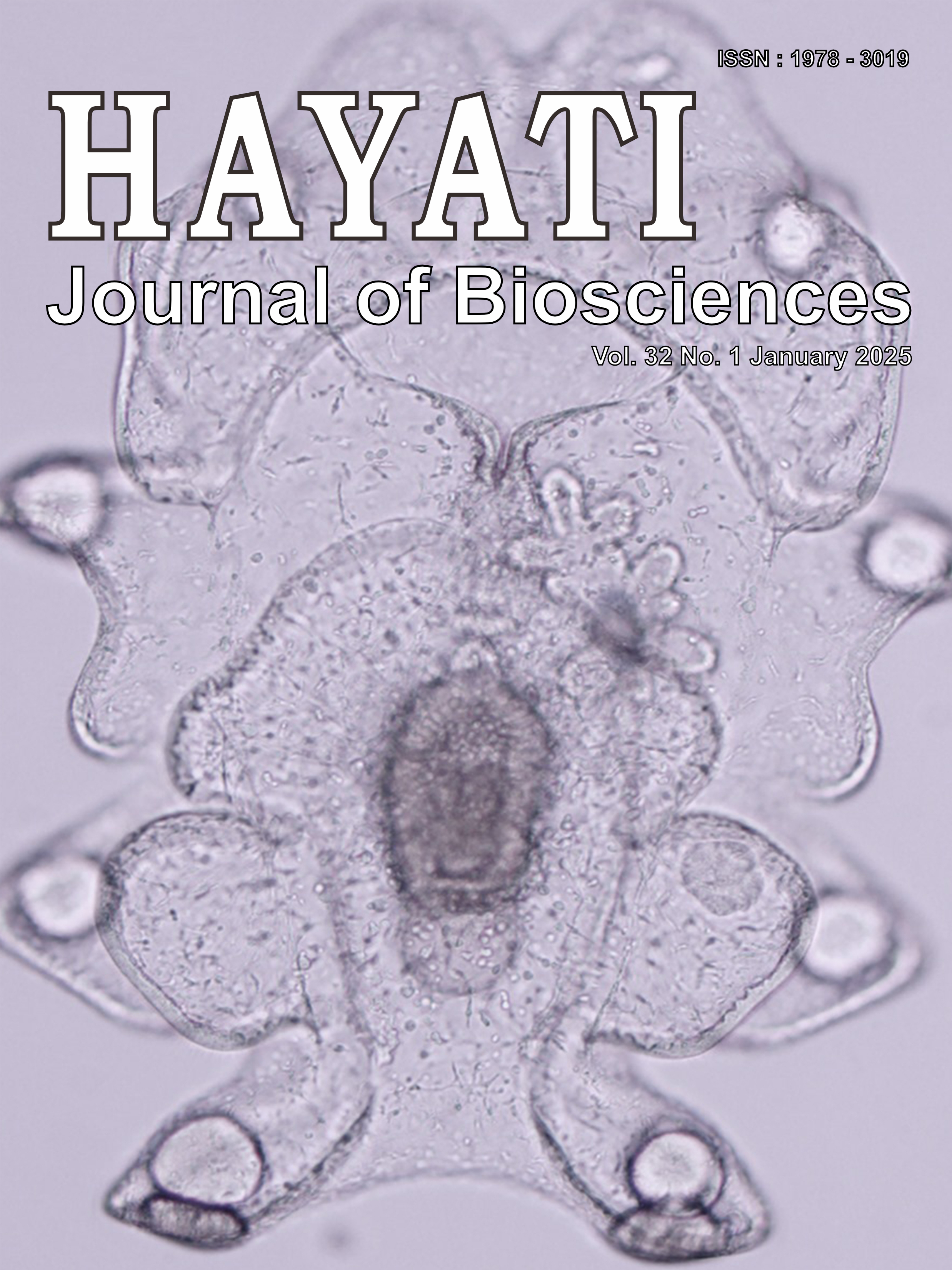The Effect of Matriconditioning Enriched Biofertilizer and Washed Rice Water to Enhance Seed Germination, IAA Content and Seeding Growth on Shallot (Allium cepa L.)
Abstract
Shallot seeds are a healthier option for cultivating shallots, as they reduce seed-borne disease infections, but they have a low germination rate. This study examined the impact of matriconditioning enriched with plant growth-promoting rhizobacteria (PGPRs) and rice washing water (WRW) on increasing germination, IAA content and growth of shallot seeds. The matriconditioning treatments included P0 (control), P1 (PGPR-absent), and PGPR presence in P2 (PGPR-Rhizomax), P3 (PGPR-BenprimA), and P4 (PGPR-FloraOne). The WRW treatments included L0 (0%), L1 (50%), and L2 (100%). The shallot seeds used are deteriorated, with moisture content and germination rates below the quality standards set by the Ministry of Agriculture of the Republic of Indonesia. The research revealed that treatment with P2 was the best result on seed germination and seedling root length. The treatment with P4 was the best result on seedling dry weight. The WRW treatment with L2 exhibited the best result in seed germination, seedling root length, and seedling dry weight. The combination of P2L2 demonstrated the best result on seed germination. The treatment with matricondiitoning increased shallot sprouts IAA content in 13-day-olds compared to controls. Also, the treatment with WRW linearly increased the IAA content in 13-day-old shallot sprouts.
Downloads
Copyright (c) 2025 Sundahri, Muhamad Wahyu Saputra

This work is licensed under a Creative Commons Attribution-NonCommercial 4.0 International License.
HAYATI J Biosci is an open access journal and the article's license is CC-BY-NC. This license lets others distribute, remix, tweak, and build upon author's work, as long as they credit the original creation. Authors retain copyright and grant the journal/publisher non exclusive publishing rights with the work simultaneously licensed under a https://creativecommons.org/

























.png) IPB University
IPB University Department of Biology
Department of Biology The Indonesian Biological Society
The Indonesian Biological Society 

